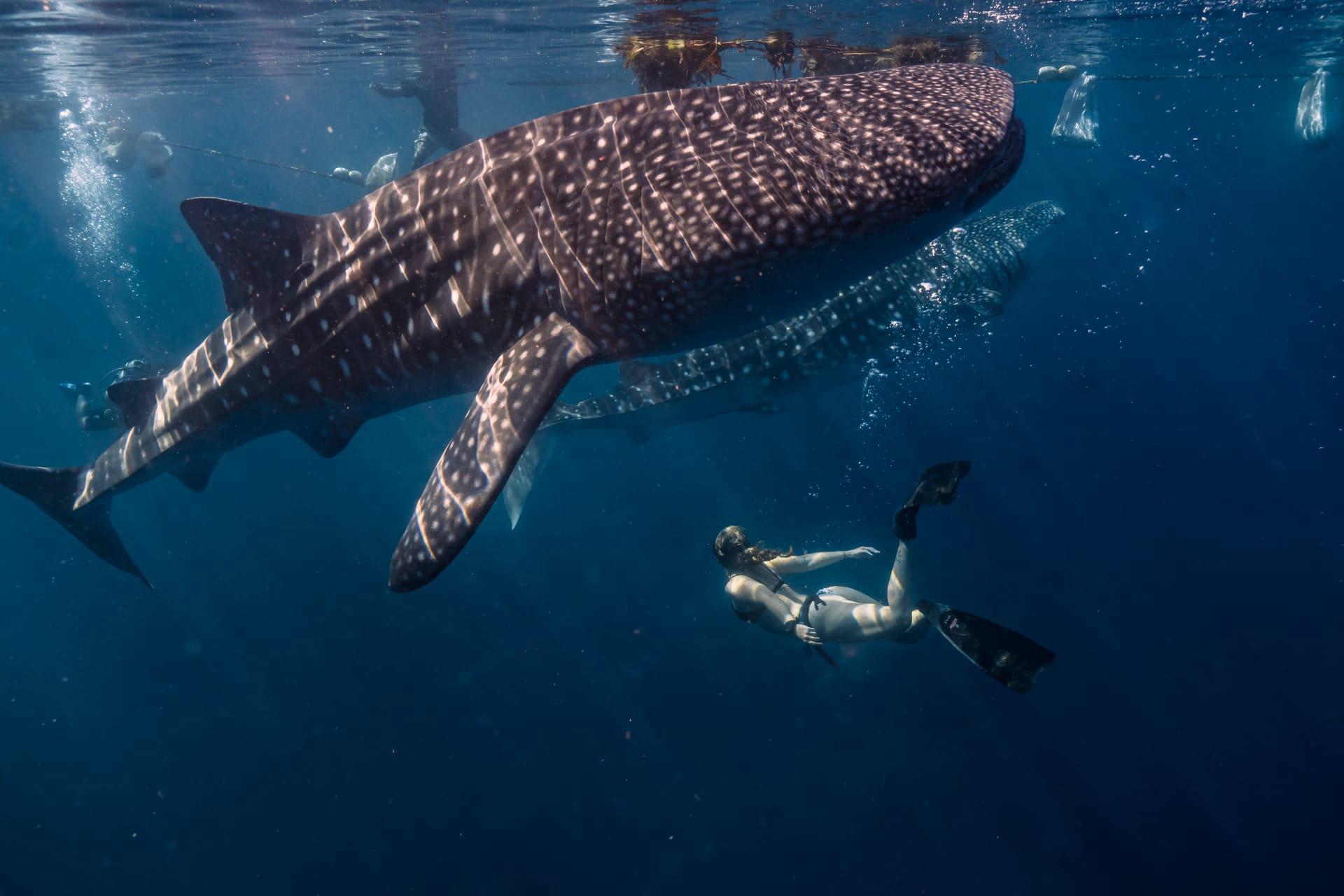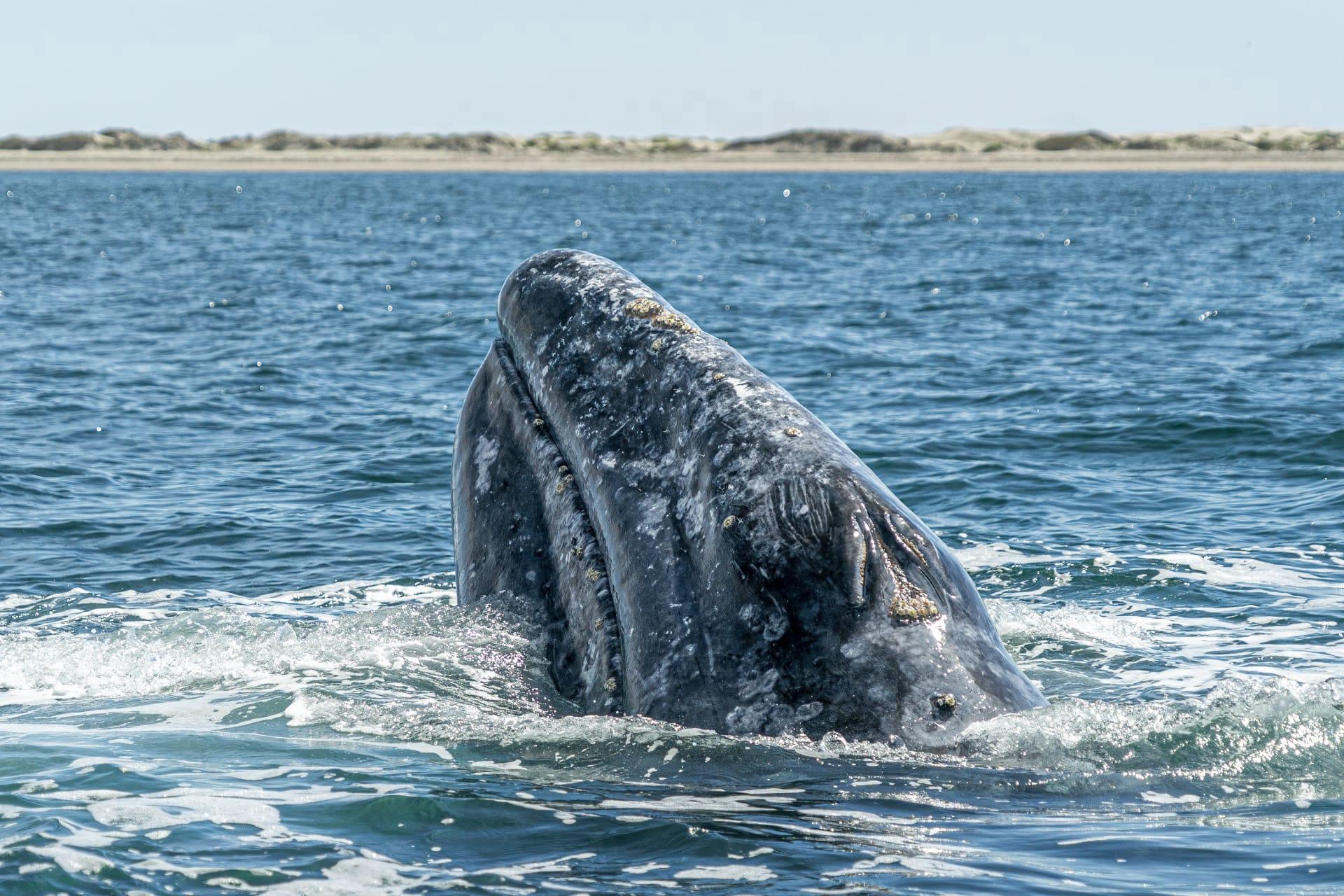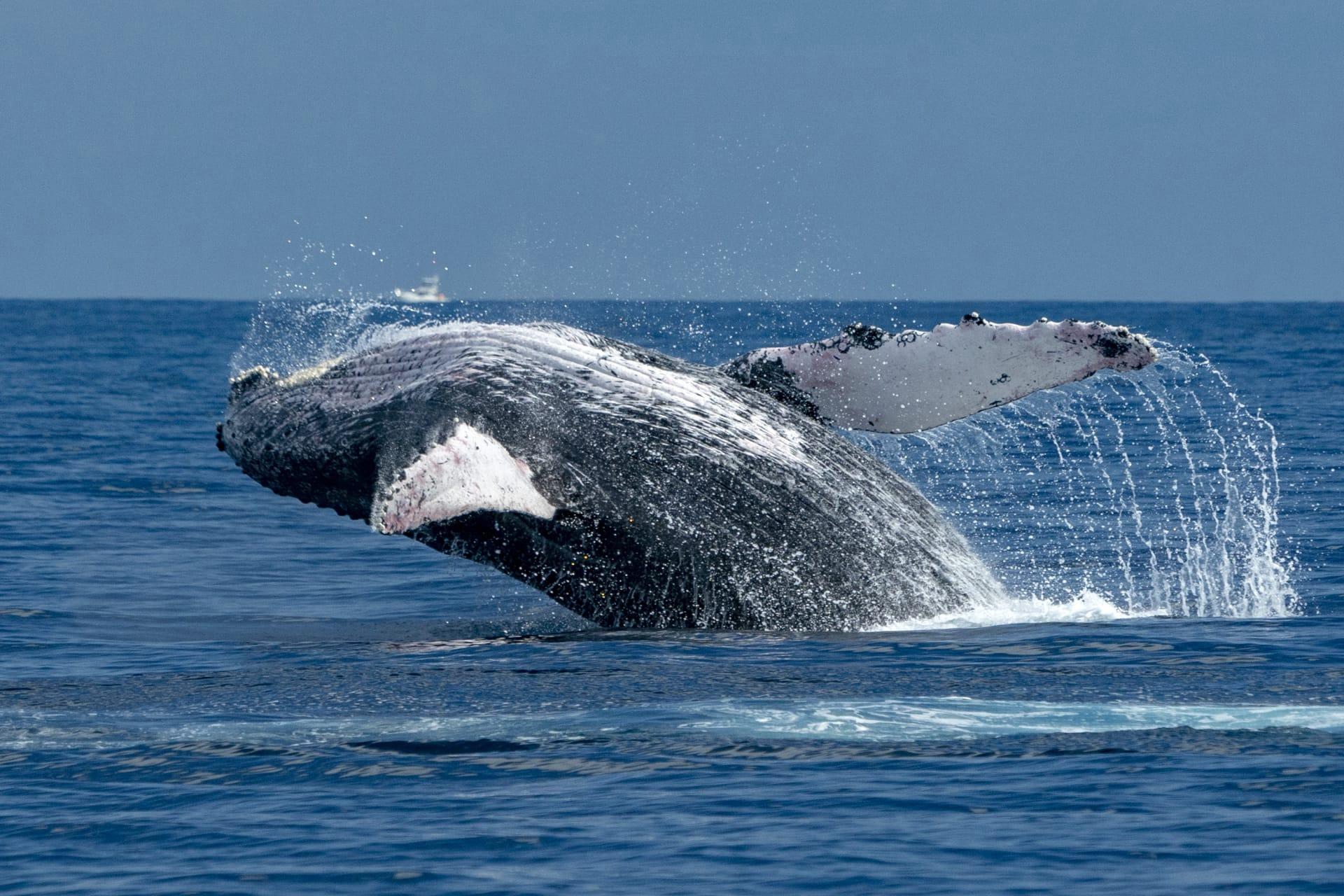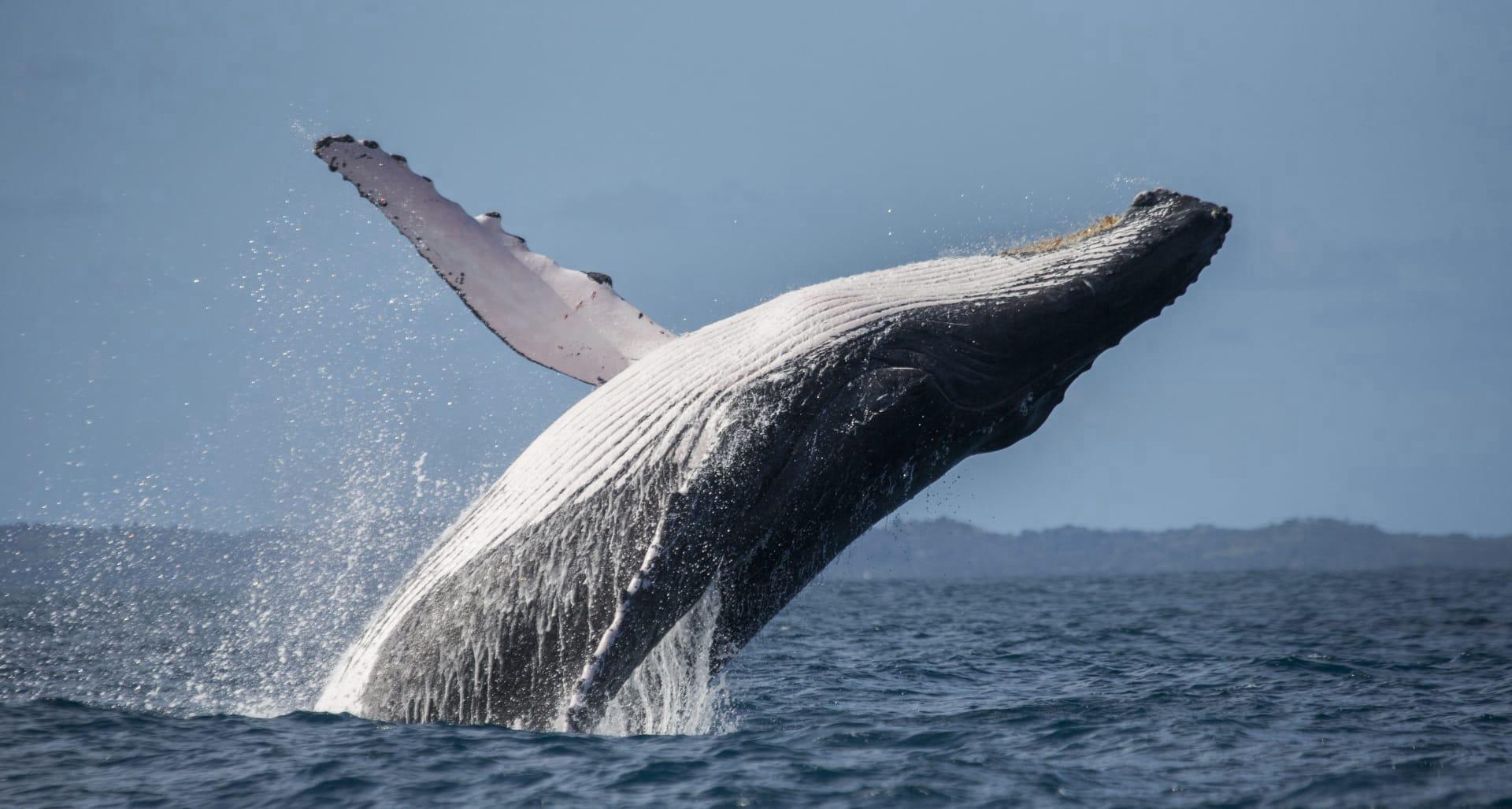1
Whales, the ocean's gentle giants, are known for their immense size, but the blue whale takes the crown, stretching up to 100 feet (30 meters) in length, which is longer than a professional basketball court. Their heart is as big as a small car, weighing around 400 kilograms (880 pounds), making it the largest heart of any living creature. This colossal size is matched by their staggering appetite; a single adult blue whale consumes about 4 tons of krill, tiny shrimp-like animals, daily.
Another fascinating fact about whales is their impressive migration journey. The humpback whale, for example, undertakes one of the longest migrations of any mammal on Earth. They travel up to 5,000 miles (8,047 kilometers) each way, from their feeding grounds in polar waters to warmer tropical waters for breeding and giving birth. This annual round-trip, covering thousands of miles, showcases their extraordinary endurance and navigation skills.

2
Whales also have a unique way of sleeping which defies common perceptions. Unlike humans, they cannot fully fall asleep because they need to be conscious to breathe. Instead, they rest one hemisphere of their brain at a time, a process known as unihemispheric slow-wave sleep. This allows them to maintain basic functions like surfacing for air and being alert for potential threats or obstacles.
Communication is key in the whale world, with species like the sperm whale using sophisticated echolocation to hunt and navigate in the deep sea. They emit a series of clicks, which bounce off objects and return as echoes, helping them locate prey and navigate the dark depths. These clicks are among the loudest sounds made by any animal, reaching levels up to 230 decibels, which can be heard for miles underwater.

3
Whales play a crucial role in maintaining marine ecosystems, particularly through their "whale pump" and "whale fall" activities. The whale pump refers to their ability to bring nutrients from the deep sea to the surface during feeding. This vertical movement of nutrients helps stimulate the growth of phytoplankton, which are vital for absorbing carbon dioxide and producing oxygen. A single whale's nutrient cycling can support an entire marine food chain.
When a whale dies and its body sinks to the ocean floor, it creates a phenomenon known as a "whale fall." These carcasses become a complex ecosystem, supporting deep-sea life for up to several decades. They provide sustenance for a variety of species, from large scavengers to microscopic bacteria, making whale falls crucial for biodiversity in the deep sea.

4
The songs of humpback whales are not only enchanting but also complex and ever-changing. These vocal performances can last for hours and are unique to each population. Interestingly, the songs evolve over time, with new patterns and sequences added each breeding season. This suggests a level of cultural learning and communication sophistication among these whales that is rare in the animal kingdom.
Despite their massive size, some whales are surprisingly agile. The fin whale, the second-largest whale species, can reach speeds up to 23 miles per hour (37 kilometers per hour). This speed, combined with their streamlined bodies, makes them one of the fastest marine mammals, earning them the nickname "the greyhounds of the sea."

5
Baleen whales, a group that includes species like the blue and humpback whales, have a unique feeding mechanism. Instead of teeth, they have baleen plates - long, flat, flexible plates that hang from their upper jaw. When feeding, they take in a huge gulp of water and then push it out through these baleen plates, trapping their prey, mainly krill and small fish, inside.
Whales have shown remarkable adaptability to the challenges posed by climate change. For example, some species have altered their migration routes and timings in response to changing ocean temperatures and prey availability. This adaptability highlights the resilience of whales but also underscores the profound impacts of environmental changes on marine life.